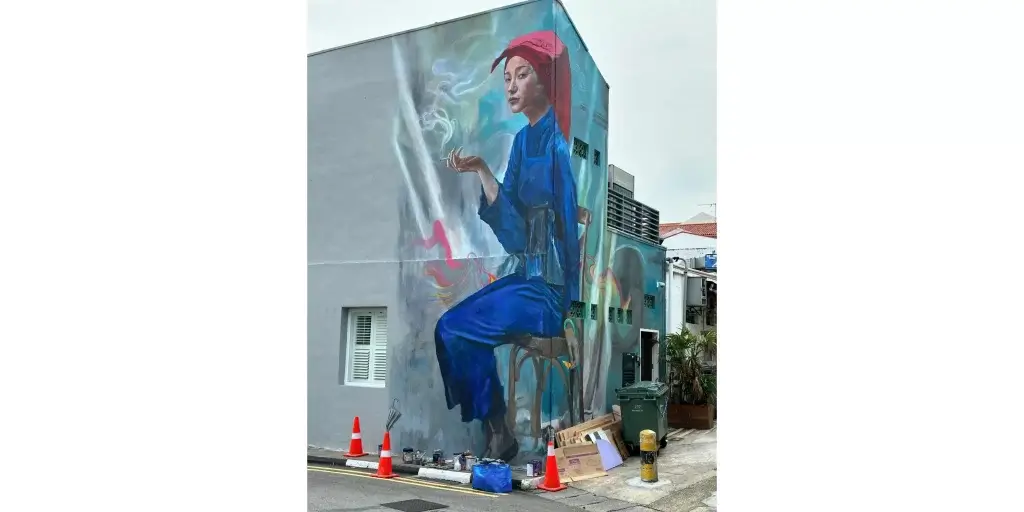A recent government order targeting a mural in Singapore’s Chinatown has ignited a debate over censorship in street art. The mural, created by Singapore-based multidisciplinary artist Sean Dunston, depicts a young Samsui woman holding a lit cigarette. This image references the Chinese women who immigrated to Singapore in the 1920s and 1940s to work in industrial jobs. Completed in April, the mural has since become a focal point of controversy.
Government Intervention
On May 8, the Urban Redevelopment Authority (URA) informed the landlord of the building featuring the mural that the artwork “was not aligned with Singapore’s anti-smoking policy stance.” This initial communication was followed by an email on June 18, which included a complaint from an unnamed member of the public. The complaint described the mural as “offensive,” suggesting that the depicted woman looked “more like a prostitute than a hard-working samsui woman.” The URA has requested a revised version of the artwork by July 3, warning that non-compliance could affect the renewal of the building’s temporary restaurant permit, set to expire on July 27.
News of the URA’s demands was first reported by the Straits Times, leading to widespread public and media attention.

Artist’s Response
Sean Dunston, an American citizen residing in Singapore since 2009, responded to the URA’s emails and the public criticism through an Instagram post on June 19. In his post, Dunston defended his artistic choices and addressed the public’s concerns directly.
“To the member of the public that leveled this criticism,” Dunston wrote, “I’d like to say that sex workers are very hard working people, and should be treated with as much respect as anyone else. You should ask your Mom about it. Also, if I offended you with this depiction of a Samsui woman, trying to enjoy herself for 2 little minutes between grind after grind, then I couldn’t be more pleased about it. You’re literally my target demographic.”
Dunston explained that his intention was to depict the Samsui woman as young rather than old, capturing a moment of respite rather than labor. He described the URA’s order as “suppressing the potential of Singapore’s art” and “a bummer.”
Historical Context
According to the South China Morning Post, Samsui women were known to smoke cigarettes after work, often storing them in their signature red headscarves. Many of these women lived in the Chinatown area where Dunston’s mural is now located, making the artwork historically relevant.
Public Reaction and Ongoing Debate
The order to alter the mural has sparked significant debate about the role of censorship in public art. Supporters of Dunston’s work argue that the mural captures an important aspect of Singapore’s cultural history and criticizes the overreach of government regulation. Opponents, however, support the URA’s stance, citing public decency and alignment with anti-smoking policies.
Dunston’s reaction to the viral nature of the controversy was also shared on Instagram, where he commented on the surreal experience of having his work dissected by such a large audience. “Now I’m in a critique session with a couple hundred thousand people or a million people or something, analyzing my work, praising it, shitting on it, and it’s become surreal and absurd. All this dopamine and cortisol pulsing through my brain at the same time is taking its toll,” he wrote.
Looking Ahead
As the July 3 deadline approaches, the art community and public alike are watching closely to see how this situation will unfold. The outcome could set a precedent for future interactions between government bodies and street artists in Singapore.
For more details and ongoing updates, you can visit Straits Times and South China Morning Post.























